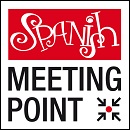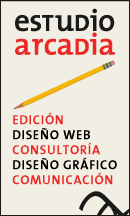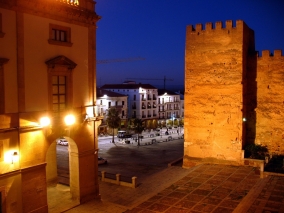Spanish schools and accommodation to study Spanish in Spain
Recent posts
Last schools
introduced
introduced
0 Accommodation

1 Spanish schools

Learning Spanish in Caceres. The tourist guide to study your Spanish course.
General Information. 93,000 inhabitants. 300 kilometres southwest of Madrid. Caceres belongs to the Autonomous Community of Extremadura and has one of the most complete urban ensembles of medieval and Renaissance buildings in the world. One of the four campuses of the University of Extremadura is located in the city. Caceres is a very attractive place to study Spanish with many language schools offering a wide range of courses.
Surrounding Areas. Mérida (76 kilometres), Trujillo (45 kilometres), Plasencia (79 kilometres) and the Monastery of Guadalupe (95 kilometres).
World Heritage Site. The entire old town of Caceres was declared a UNESCO World Heritage Site in 1986. The abovementioned monastery (Real Monasterio de Santa María de Guadalupe) was awarded this accolade in 1993.
Main Sights. The Co-Cathedral of Saint Mary (Concatedral de Santa María); the ‘Weather Vane Palace', (Palacio de las Veletas), which currently houses an archaeology museum; the Palacios de los Golfines, the former palatial homes of the aristocratic Golfin family; the ‘House of the Sun' (Casa del Sol); the Bujaco Tower (Torre de Bujaco), and the ‘Star Arch' (Arco de la Estrella). The old town of Caceres was declared Third Monumental Ensemble of Europe in 1968 by the Council of Europe, after Prague and Tallin. Other palaces worth visiting are the Episcopal Palace, Toledo-Moctezuma Palace and the ‘Palace of the Storks' (Palacio de las Cigüeñas). Also of interest to the visiting tourist are the city's towers (Torre Adosada; Torre de los Púlpitos), arches (Arco de la Estrella; Arco del Cristo), old entrance gates (Puerta de Pizarro; Puerta de Coria) and squares (Plaza Mayor; Plaza de San Jorge). Other sights include the Cave of Maltravieso (Cueva de Maltravieso), the Shrine of Our Lady of the Mountain (Ermita de Nuestra Señora de la Montaña), where a special lookout point offers wonderful views of Caceres, and the Fuente Fría, which provides the highly prized cool spring water from which it takes its name. The monuments are a major attraction for the many students who decide to study Spanish in Caceres.
Culture. The city hosts the World Of Music, Arts & Dance (WOMAD) Festival in May, the Caceres Pop-Art Festival (September), an art and culture showcase focusing on photography, cinema, literature, comics..., and the Caceres Irish Fleadh (November), featuring traditional acoustic folk music. As for museums, you can find the Municipal Historical Archive, the Municipal Permanent Exhibition Hall (Sala de Exposiciones Permanentes Municipal), the Caceres Museum and the Casa Pedrilla Museum of History and Culture. An important addition to this list of museums is the Centro de Artes Visuales Fundación Helga de Alvear, which opened in June 2010. German art dealer Helga de Alvear, who bought her first painting in 1963 and has been collecting contemporary art ever since, has donated her entire private collection of more than 2,500 works to this new centre for the visual arts.
Shopping. The most important shopping areas in Caceres are the Paseo de Cánovas, the city centre and the Ruta de la Plata shopping centre. There is also a street market in Calle Ronda de la Pizarra every Wednesday.
Gastronomy. The best place to try the local tapas in Caceres is Calle Mayor, where you will find all kinds of bars and taverns. The most typical products are those derived from Iberian pork (dry-cured ham, a spiced blood sausage called morcón, chorizos, etc.), veal, lamb, olive oil, wine and various cheeses.
Sports. The main sports centres and complexes are the Complejo Polideportivo El Cuartillo, the Centro Deportivo El Perú, the Ciudad Deportiva de Caceres, the Ciudad Deportiva Universitaria, and the Estadio Príncipe Felipe, a stadium with a capacity for 7,000 spectators. The most popular sports and pastimes are horse riding, paragliding, mountaineering and model car racing, in Caceres you can learn any of these sports.
Fiestas. Caceres Holy Week (Semana Santa Cacereña, March-April), which has been declared an Event of National Tourist Interest. The lay brotherhoods (cofradías) that organize the processions during these festivities are some of the oldest in Spain. During the May Fair (Feria de Mayo), concerts are held at the Recinto Hípico, a show jumping venue located just outside the city.
Transport. Caceres has a tourist bus which follows a sightseeing route from the main square (Plaza Mayor) to the Shrine of Our Lady of the Mountain, with stops at the Pedrilla museum, next to San Francisco bridge, and at the lookout point in the San Marquino neighbourhood, which offers spectacular views of the city. It is easy to get from Caceres to other Spanish cities by train or by using the various coach services.
Nightlife. Students who decide to study Spanish in Caceres will discover a very active nightlife, thanks to the city's university atmosphere. For a night out on the town, you should head for the bars in and around the Plaza Mayor and Calle Pizarro. Once they have closed, the partying continues in the Madrila area.
Surrounding Areas. Mérida (76 kilometres), Trujillo (45 kilometres), Plasencia (79 kilometres) and the Monastery of Guadalupe (95 kilometres).
World Heritage Site. The entire old town of Caceres was declared a UNESCO World Heritage Site in 1986. The abovementioned monastery (Real Monasterio de Santa María de Guadalupe) was awarded this accolade in 1993.
Main Sights. The Co-Cathedral of Saint Mary (Concatedral de Santa María); the ‘Weather Vane Palace', (Palacio de las Veletas), which currently houses an archaeology museum; the Palacios de los Golfines, the former palatial homes of the aristocratic Golfin family; the ‘House of the Sun' (Casa del Sol); the Bujaco Tower (Torre de Bujaco), and the ‘Star Arch' (Arco de la Estrella). The old town of Caceres was declared Third Monumental Ensemble of Europe in 1968 by the Council of Europe, after Prague and Tallin. Other palaces worth visiting are the Episcopal Palace, Toledo-Moctezuma Palace and the ‘Palace of the Storks' (Palacio de las Cigüeñas). Also of interest to the visiting tourist are the city's towers (Torre Adosada; Torre de los Púlpitos), arches (Arco de la Estrella; Arco del Cristo), old entrance gates (Puerta de Pizarro; Puerta de Coria) and squares (Plaza Mayor; Plaza de San Jorge). Other sights include the Cave of Maltravieso (Cueva de Maltravieso), the Shrine of Our Lady of the Mountain (Ermita de Nuestra Señora de la Montaña), where a special lookout point offers wonderful views of Caceres, and the Fuente Fría, which provides the highly prized cool spring water from which it takes its name. The monuments are a major attraction for the many students who decide to study Spanish in Caceres.
Culture. The city hosts the World Of Music, Arts & Dance (WOMAD) Festival in May, the Caceres Pop-Art Festival (September), an art and culture showcase focusing on photography, cinema, literature, comics..., and the Caceres Irish Fleadh (November), featuring traditional acoustic folk music. As for museums, you can find the Municipal Historical Archive, the Municipal Permanent Exhibition Hall (Sala de Exposiciones Permanentes Municipal), the Caceres Museum and the Casa Pedrilla Museum of History and Culture. An important addition to this list of museums is the Centro de Artes Visuales Fundación Helga de Alvear, which opened in June 2010. German art dealer Helga de Alvear, who bought her first painting in 1963 and has been collecting contemporary art ever since, has donated her entire private collection of more than 2,500 works to this new centre for the visual arts.
Shopping. The most important shopping areas in Caceres are the Paseo de Cánovas, the city centre and the Ruta de la Plata shopping centre. There is also a street market in Calle Ronda de la Pizarra every Wednesday.
Gastronomy. The best place to try the local tapas in Caceres is Calle Mayor, where you will find all kinds of bars and taverns. The most typical products are those derived from Iberian pork (dry-cured ham, a spiced blood sausage called morcón, chorizos, etc.), veal, lamb, olive oil, wine and various cheeses.
Sports. The main sports centres and complexes are the Complejo Polideportivo El Cuartillo, the Centro Deportivo El Perú, the Ciudad Deportiva de Caceres, the Ciudad Deportiva Universitaria, and the Estadio Príncipe Felipe, a stadium with a capacity for 7,000 spectators. The most popular sports and pastimes are horse riding, paragliding, mountaineering and model car racing, in Caceres you can learn any of these sports.
Fiestas. Caceres Holy Week (Semana Santa Cacereña, March-April), which has been declared an Event of National Tourist Interest. The lay brotherhoods (cofradías) that organize the processions during these festivities are some of the oldest in Spain. During the May Fair (Feria de Mayo), concerts are held at the Recinto Hípico, a show jumping venue located just outside the city.
Transport. Caceres has a tourist bus which follows a sightseeing route from the main square (Plaza Mayor) to the Shrine of Our Lady of the Mountain, with stops at the Pedrilla museum, next to San Francisco bridge, and at the lookout point in the San Marquino neighbourhood, which offers spectacular views of the city. It is easy to get from Caceres to other Spanish cities by train or by using the various coach services.
Nightlife. Students who decide to study Spanish in Caceres will discover a very active nightlife, thanks to the city's university atmosphere. For a night out on the town, you should head for the bars in and around the Plaza Mayor and Calle Pizarro. Once they have closed, the partying continues in the Madrila area.
© TEXT: SPANISH IN TOUR.

























